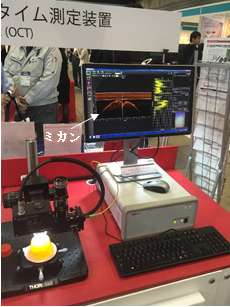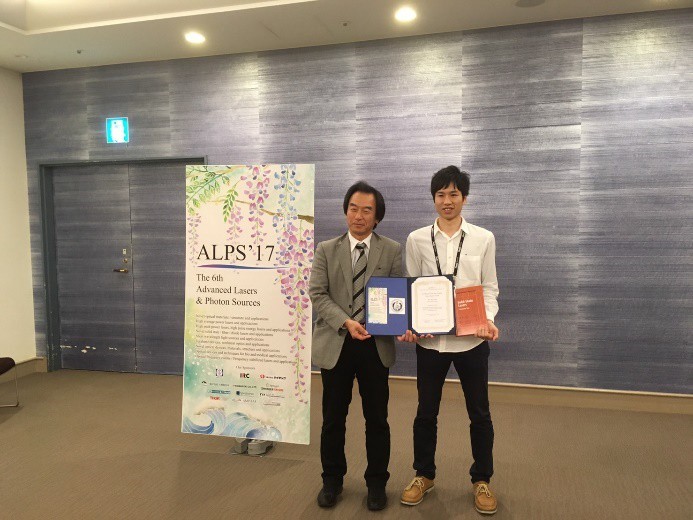ALPS'17 Shun Fujii
Research
ALPS'17 (The 6th Advanced Lasers and Photon Sources) Report
Dates April 18 - 21, 2017 Venue Pacifico Yokohama
Shun Fujii, 2nd year master's student
About the Conference
We report on the presentations at ALPS'17, which was held at Pacifico Yokohama in April 2017. ALPS (The 6th Advanced Lasers and Photon Sources) was held at Pacifico Yokohama as usual this year, and is one of the specialized conferences of OPIC2017 (Optics & Photonics International Congress), one of the largest international congresses on optics and lasers in Japan. The ALPS (The 6th Advanced Lasers and Photon Sources) is one of the specialized conferences of OPIC2017 (Optics & Photonics International Congress), one of the largest international conferences on optical and laser technologies in Japan. The OPIE exhibition was also held at the same time and was very successful.
2. about his/her own presentation
The presentation was titled "Broad Bandwidth Visible Light Generation via Third-Order Nonlinear Interaction in Silica Toroid Microcavity". It was almost the same as the one presented at the Japan Society of Applied Physics, but I reported on broad bandwidth visible light generation, focusing on blue light generation using optical carcombs and third harmonic generation. Since this was my first poster presentation at an international conference, I did not have to memorize the entire manuscript as I did for the oral presentation, but I did consider various question patterns for my presentation. I felt that the response to my presentation was very positive, and although the session lasted for about two hours, there was no end to the number of people who came to discuss the topic. Even though it was an international conference, there were many Japanese speakers, so I had to explain in Japanese in some cases, but I think I could receive valuable opinions from many professors. In the end, I received the Best Student Award, and the conference presentation was very fulfilling.
3. introduction of presentations and exhibits attended
I usually have the chance to visit the poster presentation rooms, but since I was also a poster presenter, I was not able to do so.
Among them, I would like to briefly introduce the invited lecture on Mitsubishi Electric's laser display. The current TV image standard is Hi-vision, but a new broadcasting standard, Ultra High-vision, is scheduled to start in 2018. Ultra High-vision is expected to be the next generation of TV broadcasting that can express more realistic colors while eliminating problems of motion and blurring with an overwhelmingly high pixel count of 4K and 8K. Mitsubishi Electric is trying to expand the color space by using RGB laser diodes instead of conventional TVs with white backlights and color filters. When white light sources are used, colors are inevitably determined by the characteristics of the light source and filters. This limits the color space, and the use of LDs with good spectral characteristics will enable more directional and wider bandwidth color expression. Ideally, LDs should cover 99.91 TP2T of the colors existing in the natural world, but the current technology covers up to 981 TP2T, he said.
At the exhibition (OPIE), there were many companies exhibiting, including optical equipment manufacturers. In particular, I visited the booths of well-known optical and measurement companies such as Thorlab and High Finesse, and had many conversations with the people in charge. Although I have attended such exhibitions at international conferences, I did not have much opportunity to talk with them because I was not confident in my English skills. What caught my interest was the OCT demo machine (attached photo) displayed at the Thorlab. It was very interesting to see the actual machine because I had a chance to study OCT recently. It is measuring the fault lines of a fruit jelly, and it can be seen that the packaging and tangerines are reflected in the image.
In addition, at the Optosirius booth, we were introduced to the latest version of the spectrometer we are using, and were given very useful information directly related to our research activities, such as the ability to measure power with a calibration light source.
We learned that one of the major attractions of exhibitions is that we can learn about performance and usage that we would not normally notice just by looking at catalogs by ourselves, by talking directly with the exhibitors.

(Cross section of fruit jelly is shown on the screen)

- Categories
- 国際会議報告


